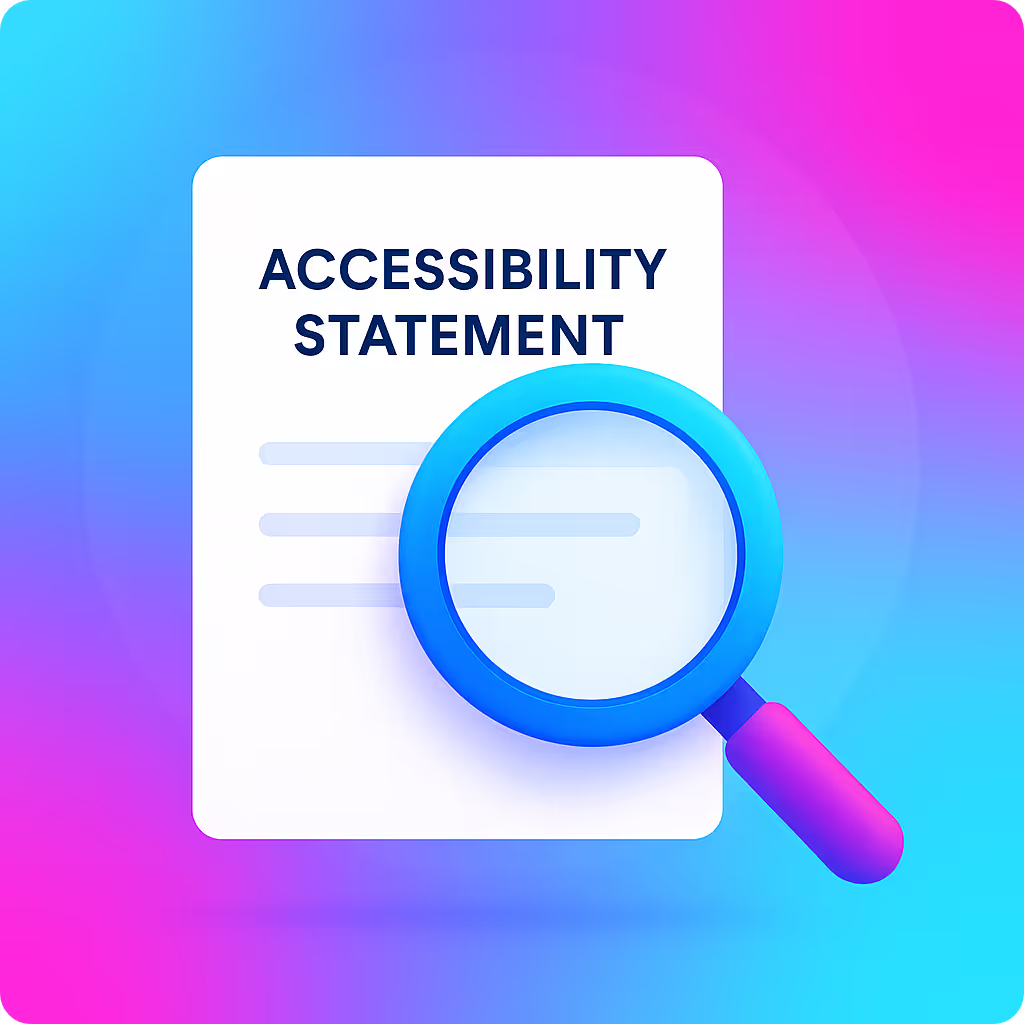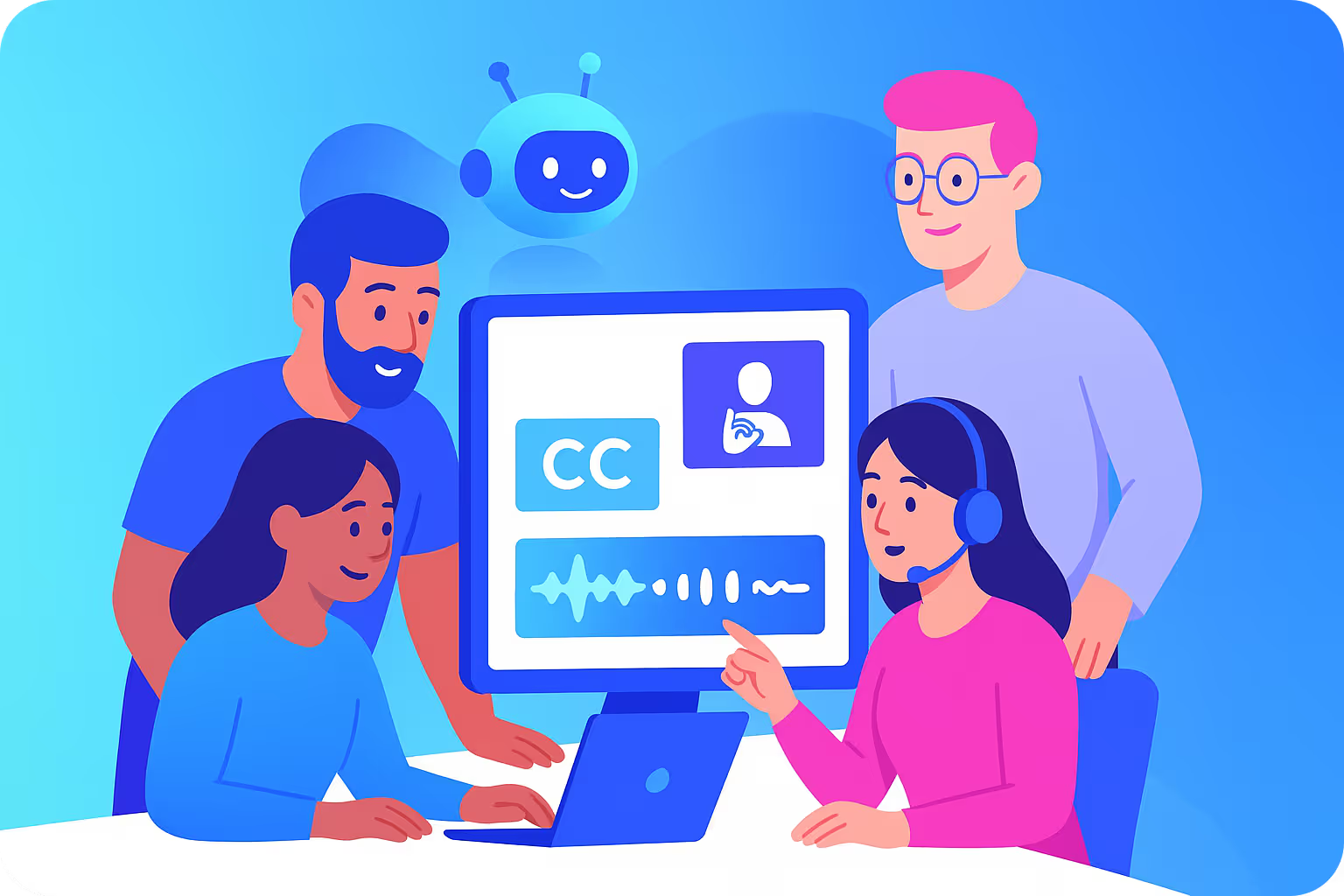The European Accessibility Act goes into effect on June 28, 2025 — but complaints are already happening.
We’re speaking with enterprise teams across Europe, and one thing is clear: many are still unsure what happens if someone files an accessibility complaint. Some assume it's just a web development issue. Others are still unaware that videos, product demos, and onboarding content are also covered under the EAA.
Here’s the reality: if a complaint is filed, it activates a formal process. Your accessibility statement will be reviewed. Deadlines apply. Fines are possible. In some cases, your ability to sell in certain countries could be suspended.
This guide breaks down what to expect if, or when, you receive an EAA complaint, and how to respond in a way that protects your brand, budget, and market access.
What Regulators Will Check First
When an accessibility complaint lands, your website or product isn’t the first thing under scrutiny — your documentation is.
Here’s what most regulators will look at within days of receiving a complaint:
- Your accessibility statement: Is it easy to find? Is it written clearly? Does it reflect the current accessibility status of your content and products?
- A feedback mechanism: Can users report accessibility issues directly through your site or app, and does someone actually monitor that inbox?
- Evidence of remediation: If you’re aware of existing issues, have you documented your timeline and progress toward fixing them?
- Language and localisation: In some countries (France, Poland), accessibility materials must be provided in the local language. Regulators will check for this.
In many jurisdictions, publishing an accessibility statement is a legal requirement, not a best practice. And it’s often the first document reviewed before penalties or escalation are considered. But what happens next depends entirely on where the complaint was filed.
Why the Country of the EAA Complaint Matters
The EAA sets a unified goal across the EU, but enforcement is entirely local.
This means that where the complaint comes from directly impacts:
- Which authority handles it
- How much time you have to respond
- What documentation must be submitted
- What escalation paths are available
For example:
- In France, complaints typically begin via the site’s required “Accessibilité” link. If unanswered, they may escalate to the Défenseur des droits or the consumer protection agency (DGCCRF).
- In Germany, complaints may pass through the BFIT-Bund or regional authorities. Administrative courts can get involved if issues aren’t resolved.
- In Spain, under Ley 11/2023, businesses must acknowledge within 7 days and resolve within 3 months. Civil action is also possible under Law 34/2002.
- In Italy, procedures vary depending on whether you're subject to the EAA transposition,Decreto Legislativo 82/2022, or legacy laws like the Stanca Law.
- In Ireland, multiple regulators may be involved — from ComReg to the Central Bank — depending on your sector.
The decentralization also means that you may face multiple complaints across different markets simultaneously, each with unique requirements, timelines, and escalation paths.
While penalties vary widely, they’re often substantial, especially when issues go unresolved or repeat complaints occur across borders.

What Happens If You Ignore an EAA Complaint or Delay Action
Delaying your response or ignoring the complaint altogether doesn’t buy you time. It increases your risk.
Penalties escalate quickly depending on the country and the nature of the violation:
- France: Fines of up to €250,000 per non-compliant site.
- Spain: Up to €600,000 — and in some cases, a ban on selling in the country for up to 2 years.
- Italy: Companies subject to the Stanca Law risk up to 5% of their annual turnover in fines.
- Germany: Penalties can exceed €500,000. Consumer protection groups may also pursue legal action.
Beyond the numbers, ignoring complaints can also lead to:
- Reputation damage: Users, journalists, and advocacy groups increasingly track accessibility performance.
- Increased remediation costs: Fixing issues under pressure, across multiple markets, is always more expensive.
- Loss of market access: Some authorities have the power to restrict sales until compliance is proven.
If you’re managing digital content across multiple EU countries, a single unresolved issue can turn into multiple investigations — fast.
First 30 Days: How to Respond
If you’ve received an EAA complaint, your first 30 days matter more than you think. Regulators aren’t just watching what you say — they’re watching what you do, how quickly, and how transparently.
Here’s a basic timeline to guide your response:
- Day 1–3: Acknowledge the complaint
- Confirm receipt via the designated feedback mechanism or the regulator’s channel.
- Notify your internal stakeholders: legal, compliance, product, and accessibility teams.
- Log the complaint and assign an internal owner.
- Day 4–10: Review and update documentation
- Reassess your accessibility statement and update it with known issues and estimated resolution timelines.
- Identify which parts of your content are in scope — especially videos, product demos, and onboarding materials.
- If applicable, translate or localize updated content per local requirements.
- Week 2–4: Begin remediation and track progress
- Prioritise fixing the most impactful or visible issues first.
- Document every step — what you fixed, when, and how.
- Depending on the country, be prepared to submit this log to the regulator or publish updates publicly.
Many regulators will be satisfied with evidence of genuine progress. However, silence, delays, or vague language are often treated as red flags and can lead to accelerated enforcement.
How AI Can Help You Automate EAA Compliance
For most teams, the real challenge with accessibility isn’t awareness. It’s volume.
Most enterprise teams handle hundreds of videos, onboarding flows, product demos, and campaign assets across multiple markets. Manually reviewing, captioning, transcribing, and localizing every asset is costly and time-consuming, especially when regulators expect prompt action.
This is where AI can make accessibility scalable:
- Automated captioning and transcription: Deliver accurate subtitles at speed, aligned with WCAG and EN 301 549 standards.
- Bulk media remediation: AI can scan your video library and flag non-compliant content before it triggers complaints.
- Language localization: AI-driven workflows can adapt captions and accessibility statements for different markets faster than manual teams.
- Change tracking: Log accessibility improvements over time — a critical asset when reporting to regulators.
In our recent article on AI budget ringfencing, we explored how leading companies are already carving out space for automation. Media accessibility is one of the most measurable — and legally impactful — ways to apply that investment.
The goal is to protect your team’s time, reduce risk, and close compliance gaps before they escalate.

Proactive Steps to Prevent EAA Complaints
One complaint is often enough to trigger internal audits, legal reviews, and reputational risk. The easiest way to avoid repeat issues? Build accessibility into your operational rhythm and not just your damage control.
Here’s how to stay ahead:
- Create a centralized inbox: Use a dedicated email (e.g. accessibility@yourcompany.com) and ensure someone checks it daily.
- Audit and localize your accessibility statements: Tailor them to each market. Some countries expect updates in their local language.
- Standardize your documentation: Track user reports, remediation timelines, and internal responses in one shared system.
- Train your internal teams: Legal, dev, support, and creative teams all play a role. Make sure they understand country-specific obligations.
- Report accessibility progress: Include it in your quarterly ESG or compliance updates, especially if your team already reports on AI, sustainability, or DEI.
The EAA isn’t static. As more countries publish guidance, your strategy will need to evolve. Staying proactive now reduces cost, confusion, and risk later.
A Note on ADA (and Why It Matters Here)
While the European Accessibility Act is EU-specific, many companies are more familiar with its American counterpart: the ADA (Americans with Disabilities Act).
The ADA has been in force for over three decades and has led to hundreds of lawsuits annually, especially targeting inaccessible websites and digital content. In many ways, it offers a preview of what could unfold under the EAA, particularly when media accessibility is ignored.
While the legal frameworks differ, the underlying principle is the same: digital accessibility is no longer optional, and regulators are watching.
Final Thought
If you've received an EAA complaint, you're not too late — but you're officially on notice.
The next few weeks are your chance to turn a legal trigger into a strategic shift. Align your teams. Automate where you can. Fix what matters. And above all, document your effort.
Subly helps enterprise teams make media content accessible at scale, across markets, and in line with WCAG and EN 301 549 standards. From automated subtitles to multilingual compliance workflows, we can help you move faster, with fewer risks.
Want to see how Subly can support your accessibility strategy? Book a demo or get in touch.
%20(6).avif)
%20(1800%20x%201200%20px).avif)


